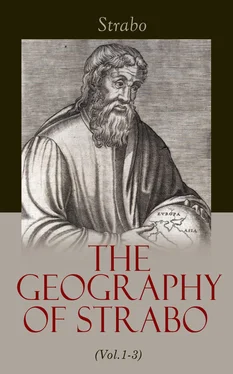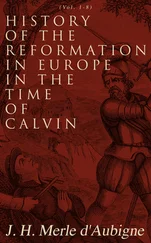Strabo - The Geography of Strabo (Vol.1-3)
Здесь есть возможность читать онлайн «Strabo - The Geography of Strabo (Vol.1-3)» — ознакомительный отрывок электронной книги совершенно бесплатно, а после прочтения отрывка купить полную версию. В некоторых случаях можно слушать аудио, скачать через торрент в формате fb2 и присутствует краткое содержание. Жанр: unrecognised, на английском языке. Описание произведения, (предисловие) а так же отзывы посетителей доступны на портале библиотеки ЛибКат.
- Название:The Geography of Strabo (Vol.1-3)
- Автор:
- Жанр:
- Год:неизвестен
- ISBN:нет данных
- Рейтинг книги:3 / 5. Голосов: 1
-
Избранное:Добавить в избранное
- Отзывы:
-
Ваша оценка:
- 60
- 1
- 2
- 3
- 4
- 5
The Geography of Strabo (Vol.1-3): краткое содержание, описание и аннотация
Предлагаем к чтению аннотацию, описание, краткое содержание или предисловие (зависит от того, что написал сам автор книги «The Geography of Strabo (Vol.1-3)»). Если вы не нашли необходимую информацию о книге — напишите в комментариях, мы постараемся отыскать её.
The Geography of Strabo (Vol.1-3) — читать онлайн ознакомительный отрывок
Ниже представлен текст книги, разбитый по страницам. Система сохранения места последней прочитанной страницы, позволяет с удобством читать онлайн бесплатно книгу «The Geography of Strabo (Vol.1-3)», без необходимости каждый раз заново искать на чём Вы остановились. Поставьте закладку, и сможете в любой момент перейти на страницу, на которой закончили чтение.
Интервал:
Закладка:
BOOK III.
SPAIN.
Table of Contents
CHAPTER I.
Table of Contents
1. Having thus given a general view of Geography, it will now be proper to describe each separate country in detail, as we engaged to do. We fancy that the method which we have adopted in the division of our subject, up to this point, has been correct; and we now recommence with Europe and the various countries into which it is divided, on the same principles as formerly, and induced by the same reasons.
2. The first division of this continent towards the west is Iberia, as we before stated. The greater part of this country is but little fitted for habitation; consisting chiefly of mountains, woods, and plains covered with a light meagre soil, the irrigation of which is likewise uncertain. The part next the north, which borders on the ocean, is extremely cold, and besides its rugged character, has no communication or intercourse with other [countries], and thus to dwell there is attended with peculiar hardship. Such is the character of this portion; on the other hand, almost the whole of the south is fertile, especially what is beyond the Pillars [of Hercules]. This however will be shown more in detail, but we must first describe the figure and extent [of the country].
3. In shape it resembles a hide stretched out in length from west to east, the forepart 974towards the east, its breadth being from north to south. Its length is about 6000 stadia; the greatest breadth is 5000; while there are parts considerably less [Pg 206] CAS. 137 than 3000, particularly in the vicinity of the Pyrenees, which form the eastern side. This chain of mountains stretches without interruption from north to south, 975and divides Keltica 976from Iberia. The breadth both of Keltica and Iberia is irregular, the narrowest part in both of them from the Mediterranean to the [Atlantic] Ocean being near the Pyrenees, particularly on either side of that chain; this gives rise to gulfs both on the side of the Ocean, and also of the Mediterranean; the largest of these are denominated the Keltic or Galatic Gulfs, 977and they render the [Keltic] Isthmus narrower than that of Iberia. 978The Pyrenees form the eastern side of Iberia, and the Mediterranean the southern from the Pyrenees to the Pillars of Hercules, thence the exterior [ocean] 979as far as the Sacred Promontory. 980The third or western side runs nearly parallel to the Pyrenees from the Sacred Promontory to the promontory of the Artabri, called [Cape] Nerium. 981The fourth side extends hence to the northern extremity of the Pyrenees.
* Note. The pages of Casaubon’s edition of 1620 are given to facilitate reference to various editions and translations of Strabo.
4. We will now commence our detailed account, beginning from the Sacred Promontory. This is the most western point not only of Europe, but of the whole habitable earth. For the habitable earth is bounded to the west by two continents, namely, the extremities of Europe and Libya, 982which are inhabited respectively by the Iberians and the Maurusians. 983But the Iberian extremity, at the promontory 984we have mentioned, juts out beyond the other as much as 1500 stadia. 985The region adjacent to this cape they call in the Latin tongue Cuneum , 986which signifies a wedge . The promontory which projects into the sea, Artemidorus (who states that he has himself been at the place) compares to a ship; three little islands, [he says,] each having a small harbour, contribute to give it this form; the former island resembling the beak of the ship, and the two latter the beams on each side of the ship’s bows. [He adds] that there is no temple of Hercules shown there, as Ephorus falsely states, nor yet any altar [to him] nor to any other divinity; but in many parts there are three or four stones placed together, which are turned by all travellers who arrive there, in accordance with a certain local custom, and are changed in position by such as turn them incorrectly. 987It is not lawful to offer sacrifice there, nor yet to approach the place during the night, for it is said that then the gods take up their abode at the place. Those who go thither to view it stay at a neighbouring village over-night, and proceed to the place on the morrow, carrying water with them, as there is none to be procured there.
5. It is quite possible that these things are so, and we ought not to disbelieve them. Not so however with regard to the other common and vulgar reports; for Posidonius tells us the common people say that in the countries next the ocean the sun appears larger as he sets, and makes a noise resembling the sound of hot metal in cold water, as though the sea were hissing as the sun was submerged in its depths. The statement [of Artemidorus] is also false, that night follows immediately on the setting of the sun: it does not follow immediately, although certainly the interval is short, as in other great seas. For when he sets behind mountains the agency of the false light continues the day for a long period; over the sea the twilight is shorter, still darkness does not immediately supervene. The same thing may be remarked in large plains. The image of the sun is enlarged on the seas at its rising as well as at its setting, because at these times a larger mass of [Pg 208]
[CAS. 138] exhalations rises from the humid element; and the eye looking through these exhalations, sees images refracted into larger forms, as observed through tubes. The same thing happens when the setting sun or moon is seen through a dry and thin cloud, when those bodies likewise appear reddish. 988Posidonius tells us that, having himself passed thirty days at Gades, 989during which time he carefully observed the setting of the sun, he is convinced of the falsity of Artemidorus’s account. This latter writer tells us, that at the time of its setting the sun appears a hundred times larger than its ordinary size, and that night immediately succeeds. If we attend to his account, we cannot believe that he himself remarked this phenomenon at the Sacred Promontory, 990for he tells us that no one can approach during the night; therefore they cannot approach at sunset, since night immediately supervenes thereupon. Neither did he observe it from any other part of the coast washed by the ocean, for Gades is upon the ocean, and both Posidonius and many others testify that there such is not the case.
6. The sea-coast next the Sacred Promontory forms on one side the commencement of the western coast of Spain as far as the outlet of the river Tagus; and on the other forms the southern coast as far as the outlet of another river, named the Guadiana. 991Both of these rivers descend from the eastern parts [of Spain]; but the former, which is much larger than the other, pursues a straight course towards the west, while the Guadiana bends its course towards the south. 992They enclose an extent of country peopled for the most part by Kelts and certain Lusitanians, 993whom the Romans caused to settle here from the opposite side of the Tagus. Higher up, the country is inhabited by the Carpetani, 994the Oretani, 995and a large number of Vettones. 996This district is moderately fertile, but that which is beyond it to the east and south, does not give place in superiority to any part of the habitable earth with which it may be compared, in the excellence of its productions both of land and sea. This is the country through which the river Guadalquiver 997flows. This river takes its rise from the same parts as the Guadiana 998and the Tagus, and is between these two in size. 999Like the Guadiana, the commencement of its course flows towards the west, but it afterwards turns to the south, and discharges itself at the same side of the coast as that river.
From this river(998) the country has received the name of Bætica; it is called Turdetania by the inhabitants, who are themselves denominated Turdetani, and Turduli. Some think these two names refer to one nation, while others believe that they designate two distinct people. Of this latter opinion is Polybius, who imagines that the Turduli dwell more to the north than the Turdetani. At the present day however there does not appear to be any distinction between them. These people are esteemed to be the most intelligent of all the Iberians; they have an alphabet, and possess ancient writings, poems, and metrical laws six thousand years old, as they say. The other Iberians are likewise furnished with an alphabet, although not of the same form, nor do they speak the same language. Their country, 1000which is on this side the [Pg 210] [CAS. 139] Guadiana, extends eastward as far as Oretania, 1001and southward along the sea-coast from the outlets of the Guadiana to the Pillars [of Hercules]. But it is necessary that I should enter into further particulars concerning this and the neighbouring places, in order to illustrate their excellence and fertility.
Читать дальшеИнтервал:
Закладка:
Похожие книги на «The Geography of Strabo (Vol.1-3)»
Представляем Вашему вниманию похожие книги на «The Geography of Strabo (Vol.1-3)» списком для выбора. Мы отобрали схожую по названию и смыслу литературу в надежде предоставить читателям больше вариантов отыскать новые, интересные, ещё непрочитанные произведения.
Обсуждение, отзывы о книге «The Geography of Strabo (Vol.1-3)» и просто собственные мнения читателей. Оставьте ваши комментарии, напишите, что Вы думаете о произведении, его смысле или главных героях. Укажите что конкретно понравилось, а что нет, и почему Вы так считаете.












![Anne Blunt - A Pilgrimage to Nejd, the Cradle of the Arab Race. Vol. 2 [of 2]](/books/750183/anne-blunt-a-pilgrimage-to-nejd-the-cradle-of-the-thumb.webp)